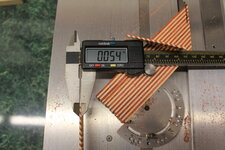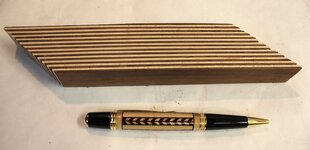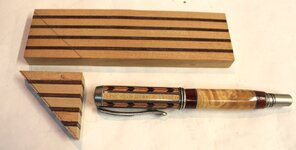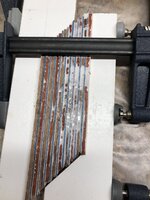Sierra super button click. Woods are maple, bloodwood, osage orange, santos rosewood and olive green vaneer. Chevrons have been a little elusive to me, finally came up with a method that works for me.

Sent from my iPhone using Penturners.org mobile app
Sent from my iPhone using Penturners.org mobile app




